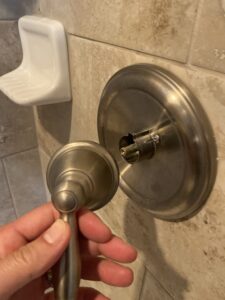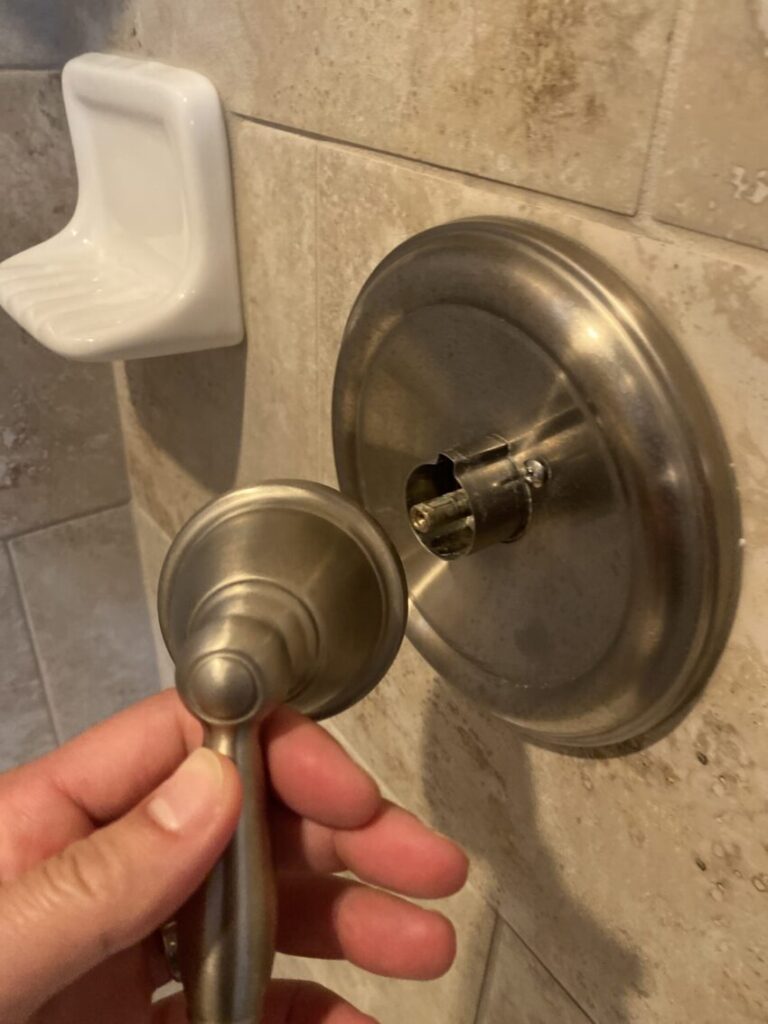Picture this. You’ve just finished a nice hot shower. You go to turn off the water, but the shower handle will not cooperate. There’s a drip that won’t stop coming out of the shower head. No need to panic! We’ve dealt with this situation countless times. We are here to share all of our expert plumbing advice. From when it’s time to replace your shower valve to how to handle a dripping bathtub or shower faucet, we’ve got you covered with all of the answers so you’re prepared on how to move forward. Keep reading for how to a few different bathtub and shower difficulties.
-
- You can’t turn off the shower or bathtub: Just as the headline indicates, we’re covering how to fix a leaky shower head correctly and efficiently. If you find yourself in a situation where your shower head or bath spout keep running even when the handle is in the off position, these are the next steps. The first is to look at the age and brand of the shower valve. What is a shower valve? A shower valve is the valve behind the handle that allows the bath or shower water to be turned on and off. It controls temperature and flow of water. The shower valve is located behind the shower tile or fiberglass. We’ll get into that a bit more later. Another component is a shower cartridge. A shower cartridge is a smaller piece and part of the trim that is also responsible for controlling the flow and temperature of the water. As we were mentioning, depending on the age and brand of shower valve, you may be able to resolve the issue by just replacing the cartridge which is a cheaper and easier fix. If your shower valve is older, the plumber may not be able to successfully remove and replace the cartridge and/or replacing the cartridge may not resolve the leaking issue. The cartridge may also be obsolete or discontinued, meaning the replacement is no longer sold. In each of these scenarios, the only option is to replace the shower valve. Replacing the shower valve is a more costly but permanent fix. When we replace the valve, you also get a new trim kit which means you get a new shower head, and handle. How is a shower valve replaced? When a shower valve is replaced, we need to access what’s behind the shower handle which means we typically have to remove sheetrock from whatever is on the other side of the shower. If that’s not possible, we will need to remove tile around the shower handle to access and replace the shower valve. It’s a more invasive process which is why many prefer to try to replace the cartridge first. In order to replace the valve, the plumber will need to solder the metals together which involves using a torch. To do this correctly, they will cut a sufficiently sized hole to allow room for the shower valve and tools necessary for installation. Unfortunately, just replacing the cartridge only works about 20% of the time and often leaves you spending good money after bad.
- Your shower valve is stuck or is difficult to turn:

This customer had trouble turning the shower handle and it broke off. The bad news is, almost 100% of the time, if you’re unable to turn your shower or bathtub handle, it means you’ll need to replace the valve. Replacing your bath or shower valve involves all of the steps above and is more invasive however, it’s a foolproof fix. And, the good news is you’ll have a new updated trim kit to go along with with your newly installed shower valve. Furthermore, if you’re picking a new valve, it’s best to select a known brand from either a hardware or plumbing supply store. Avoid Amazon or random online retailers because when it comes time to replace your cartridge down the line, you’ll be able to find a compatible replacement.
- You notice a leak in the ceiling below when you shower: Shower valves leak when they get older or become corroded. When this happens, you’ll see water present in the ceiling below your shower. This indicates you need a new shower cartridge or shower valve. A trained plumbing technician will be able to point you in the right direction. To be sure, a technician will usually cut a small hole in the ceiling since the sheetrock typically will have to be replaced anyway. This will allow them to run the shower and make sure the valve is the cause of the leak. Plumbers do not usually replace tile or sheetrock but can typically recommend a good person to do so.
We get lots of calls about what to do when a shower head leaks, a shower handle won’t shut the flow of water off, or a shower handle is difficult to turn. We are always happy to answer questions or help guide you to an efficient solution. Hopefully this article is helpful and gives some background about what’s involved in a shower water supply system. As always, we are here to answer any questions. Give us a call at 720-999-6120.

